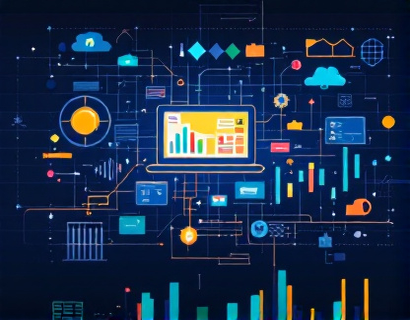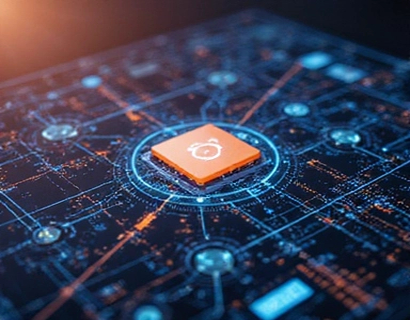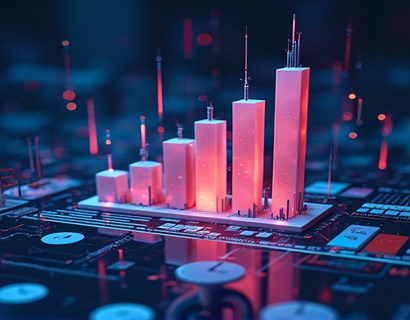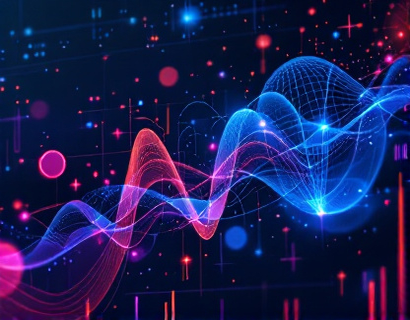Exploring the Frontier of Nanotechnology: AI-Driven Insights for Specialized Nanobot Knowledge
In the rapidly evolving landscape of technology, nanobots stand as a beacon of innovation, promising transformative applications across various fields from medicine to manufacturing. This article delves into the specialized knowledge of nanobots, leveraging AI-driven insights to provide a comprehensive resource for users, educators, and curious minds, especially those with an interest in engaging young learners. The focus is on creating an accessible, secure, and educational environment where expert information meets child-friendly content.
The Intersection of Nanotechnology and AI
Nanotechnology, the manipulation of matter on an atomic, molecular, and supramolecular scale, has given rise to nanobots—tiny machines designed to perform specific tasks at the nanoscale. These nanobots hold the potential to revolutionize industries by enabling precise drug delivery, advanced materials, and sophisticated diagnostics. However, the complexity of this field can be daunting for both professionals and enthusiasts. AI-driven platforms play a crucial role in demystifying these concepts, offering insights that are both accurate and accessible.
AI-Driven Chat Platforms: A Gateway to Expert Knowledge
One of the most effective ways to navigate the intricate world of nanobots is through AI-driven chat platforms. These platforms utilize natural language processing and machine learning to provide users with expert insights and verified content. By interacting with an AI, users can ask questions, receive detailed explanations, and gain a deeper understanding of nanobot technology and its applications. This approach not only democratizes access to specialized knowledge but also ensures that the information is up-to-date and reliable.
Benefits for Educators and Professionals
For educators, integrating AI-driven nanobot knowledge into the curriculum can enhance students' understanding of cutting-edge technology. These platforms offer a wealth of resources, from basic concepts to advanced topics, tailored to different educational levels. Professionals in related fields can also benefit from staying informed about the latest developments and research in nanobot technology. The AI chat interface serves as a valuable tool for continuous learning and professional development.
Child-Friendly Content and Safety
Ensuring that such advanced topics are accessible to children and students is crucial for fostering the next generation of innovators. The AI chat platform includes a child-friendly version, carefully curated to present complex ideas in a simple and engaging manner. This version adheres to strict safety standards, providing a secure environment where young learners can explore nanobots without exposure to inappropriate content. Parents and educators can rest assured that their children are learning from trusted sources.
Understanding Nanobots: Core Concepts and Applications
To truly appreciate the potential of nanobots, it's essential to grasp some fundamental concepts. Nanobots, or nanorobots, are microscopic machines engineered to perform specific tasks at the nanoscale, typically ranging from 1 to 100 nanometers. At this scale, materials exhibit unique properties, enabling nanobots to interact with biological systems, manipulate molecules, and perform tasks that are impossible for larger machines.
One of the most promising applications of nanobots is in the medical field. Imagine tiny robots that can navigate through the bloodstream, delivering drugs directly to cancer cells while sparing healthy tissue. This targeted approach could significantly reduce side effects and improve treatment efficacy. Nanobots could also be used for early disease detection, monitoring health metrics in real-time, and even repairing damaged cells or tissues.
Manufacturing and Materials Science
In manufacturing, nanobots can revolutionize the production process by enabling precise assembly and manipulation of materials at the molecular level. This precision can lead to the creation of new materials with enhanced properties, such as increased strength, flexibility, or conductivity. For instance, nanobots could be used to build complex structures atom by atom, resulting in materials that are lighter, stronger, and more durable than those produced by conventional methods.
Another exciting application is in environmental remediation. Nanobots can be designed to target and neutralize pollutants at the source, cleaning up contaminated water and soil more effectively than current technologies. By breaking down toxic substances into harmless components, nanobots can play a crucial role in protecting our environment and public health.
The Role of AI in Advancing Nanobot Technology
AI plays a pivotal role in the development and optimization of nanobot technology. Machine learning algorithms can analyze vast amounts of data to identify patterns, predict outcomes, and optimize designs. For example, AI can simulate the behavior of nanobots in different environments, helping researchers understand how they interact with biological systems and identify potential challenges. This simulation capability accelerates the research and development process, bringing innovative solutions to market faster.
Moreover, AI-driven diagnostics can enhance the performance of nanobots in real-world applications. By continuously monitoring and adjusting the behavior of nanobots, AI ensures they operate efficiently and effectively. This real-time feedback loop is essential for applications like drug delivery, where precise control is critical.
Ethical Considerations and Future Directions
As with any powerful technology, the development of nanobots raises important ethical questions. Issues such as privacy, safety, and the potential for misuse must be carefully considered. Ensuring that nanobots are used for the greater good requires a collaborative effort from scientists, policymakers, and the public. Transparency in research and development, along with robust regulatory frameworks, can help address these concerns and build trust in nanobot technology.
Looking to the future, the potential applications of nanobots are vast and varied. From advancing space exploration by creating self-repairing spacecraft to enhancing agricultural productivity through precise nutrient delivery, the possibilities are endless. The key to realizing this potential lies in continued research, innovation, and responsible use of the technology.
Engaging Young Minds: Educational Resources and Activities
To inspire the next generation of nanotechnology enthusiasts, educational resources and activities are essential. The AI chat platform offers a range of interactive content designed to engage children and students. These resources include simplified explanations of nanobot concepts, interactive simulations, and hands-on projects that bring the science to life.
For example, students can participate in virtual labs where they design and test their own nanobots, learning about the principles of nanoscale engineering in a fun and interactive way. These activities not only enhance understanding but also spark curiosity and creativity. Educators can integrate these resources into their lesson plans, providing a comprehensive and engaging learning experience.
Parental Involvement and Support
Parents play a vital role in supporting their children's educational journey. By staying informed about the topics their children are learning, parents can engage in meaningful discussions and provide additional resources. The AI chat platform offers parents access to simplified explanations and educational materials, enabling them to support their children's learning at home. This collaboration between educators and parents ensures a consistent and supportive learning environment.
Conclusion: Embracing the Future with AI-Driven Insights
The world of nanobots is a fascinating and rapidly evolving field, with immense potential to transform various aspects of our lives. Through AI-driven chat platforms, we can demystify this complex technology, making it accessible and educational for all. Whether you are a seasoned professional, an educator, or a curious learner, these platforms offer a valuable resource for exploring the intricacies of nanobot technology. By fostering a deeper understanding and encouraging innovation, we can ensure that the future of nanotechnology is bright and beneficial for all.











































